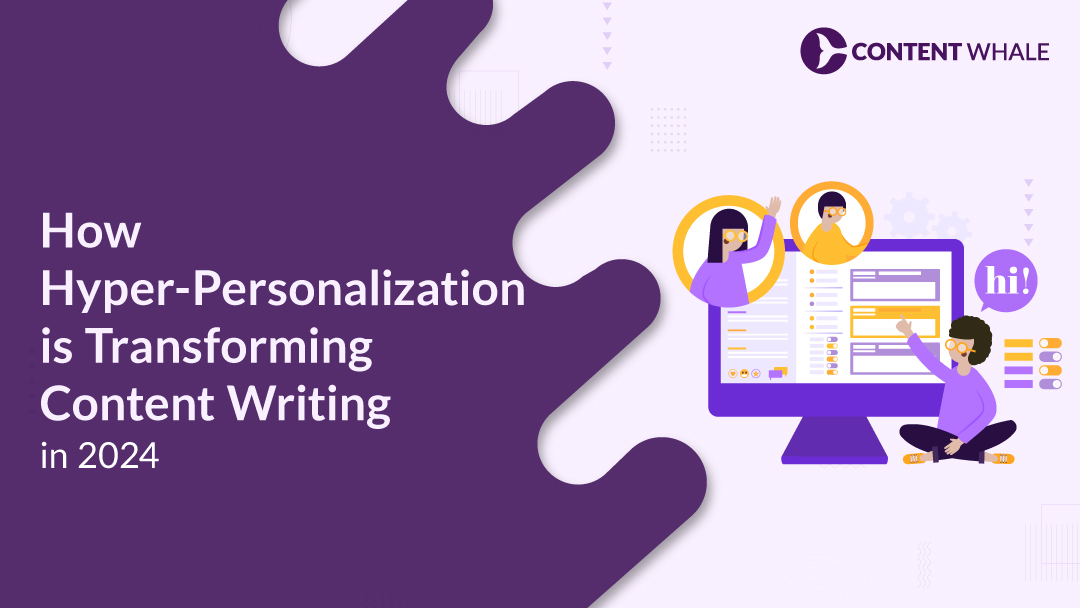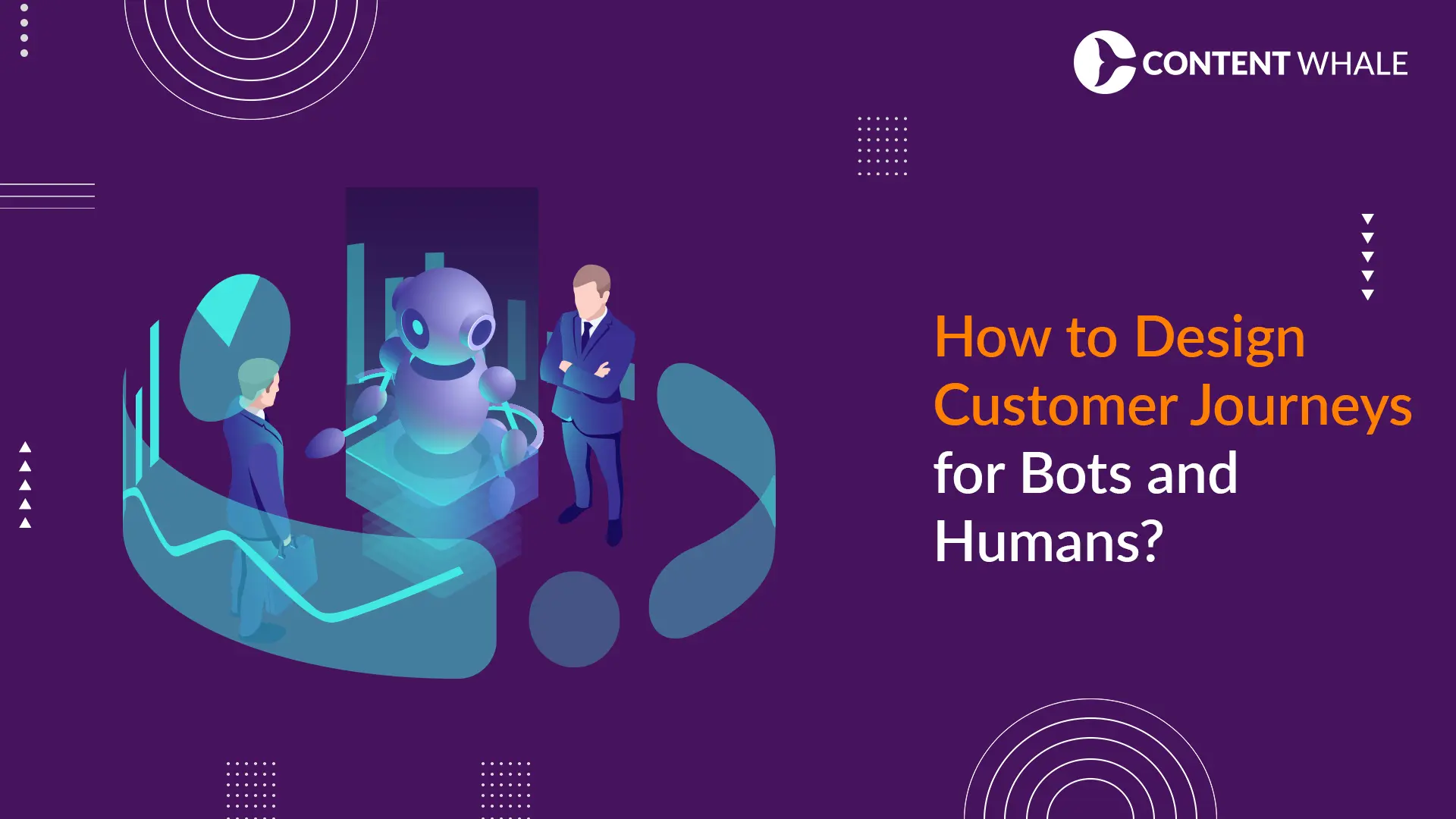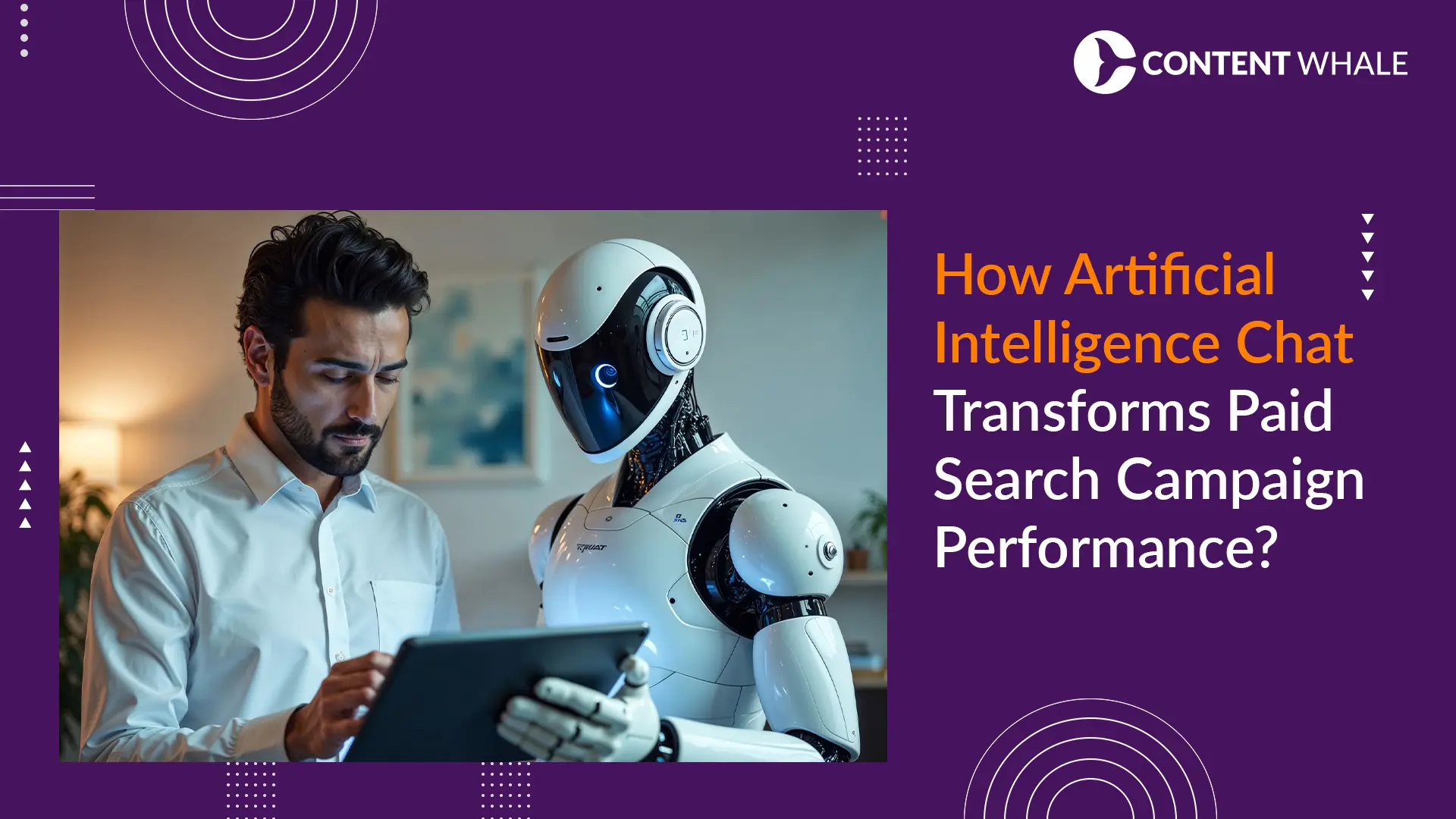If you’re not using hyper-personalization in content writing by now, you’re falling behind. Today’s consumers don’t just want personalized experiences—they demand them. And if you’re still relying on basic personalization tactics like adding a name to an email, you’re missing out on huge opportunities to engage and convert your audience.
Thanks to AI-driven content personalization, you can take personalization to the next level. We’re talking about real-time, data-driven content that speaks directly to your customers’ behavior, preferences, and interactions. This isn’t guesswork—it’s precise, and it’s effective. With dynamic content personalization, you can deliver tailored messages instantly, driving higher engagement and better results, without the time-consuming manual work.
As we move into 2024, the market is changing. Consumers want more relevant content, faster, and personalized content marketing trends are showing us that businesses who don’t adapt will lose. Want to increase your customer engagement? Want to boost your ROI? Hyper-personalization is the way forward. And the brands that get this right will dominate.
1. The Rise of AI-Driven Hyper-Personalization in Content Writing
AI has become the driving force behind hyper-personalization in content writing, allowing brands to deliver highly relevant, customized content with precision and scale. Unlike traditional personalization, which relies on basic data points like demographics, AI uses behavioral, contextual, and real-time data to understand individual customer preferences at a deeper level.
A) How AI Powers Hyper-Personalization:
- Data Processing at Scale: AI-driven tools sift through massive datasets, analyzing customer behavior, purchase history, browsing patterns, and even social media interactions. This creates a detailed profile of each user, which helps brands offer more personalized content.
- Dynamic Content Personalization: With the ability to adapt content in real time, AI ensures that users see content that aligns with their current interests. For instance, companies like Amazon and Netflix use dynamic content algorithms to recommend personalized products or shows based on user activity, creating a seamless experience across platforms.
- Enhanced Efficiency: AI doesn’t just improve the quality of personalization, it does so at a scale that would be impossible to achieve manually. This allows even smaller brands to compete by offering hyper-personalized content without the need for large teams.
B) Real-World Examples:
- Netflix utilizes AI to power about 80% of its content recommendations, resulting in higher user engagement and retention. By analyzing user behavior, Netflix curates content that’s tailored to individual viewing preferences, which significantly reduces churn and boosts user satisfaction.
- Amazon employs AI for product recommendations by analyzing each user’s shopping patterns and predicting what they’re likely to buy next. This has revolutionized e-commerce and is key to Amazon’s continued success in retaining customers.
2. How Hyper-Personalization Enhances Customer Engagement
Personalization is no longer enough—hyper-personalization in content writing has raised the bar for customer engagement by offering deeply tailored experiences. By analyzing real-time data, behavior patterns, and preferences, hyper-personalization delivers content that speaks directly to an individual’s needs.
A) Why Hyper-Personalization Works:
- Personalized Interactions: Tailored content keeps customers engaged because it resonates on a personal level. When brands deliver content that addresses specific user pain points or interests, users are more likely to spend time on websites or apps. For instance, companies like Netflix and Amazon use AI-driven content personalization to recommend content or products that align with a user’s viewing or purchase history, significantly boosting engagement.
- Real-Time Adaptation: Unlike traditional personalization, hyper-personalization uses dynamic content personalization, adjusting content in real-time based on user interactions. This creates an experience that feels fresh and relevant. For example, Duolingo keeps users engaged by tailoring learning experiences based on individual progress and learning styles, which helps maintain interest and motivation.
- Higher Engagement Metrics: Hyper-personalized content has been shown to drive measurable improvements in key engagement metrics. Businesses that embrace these strategies experience longer session times, lower bounce rates, and improved click-through rates. As personalized content marketing trends 2024 show, customers increasingly expect these bespoke interactions from brands.
B) Real-World Example:
- Duolingo applies hyper-personalization by adapting lessons based on each user’s progress, weaknesses, and preferences. This personal touch keeps users motivated and coming back for more, resulting in higher engagement and retention rates.
| # | Engagement Factor | Hyper-Personalization Enhances Engagement |
| 1 | Real-Time Relevance | AI-driven tools analyze real-time data, ensuring that the content is always relevant to the user’s current needs and preferences. |
| 2 | Increased Trust and Loyalty | Consistently delivering personalized content that aligns with individual preferences builds trust and fosters stronger brand loyalty. |
| 3 | Improved Conversion Rates | Tailored content and personalized offers encourage immediate action, leading to higher conversion rates. |
| 4 | Seamless Omnichannel Experience | Users receive a consistent, hyper-personalized experience across all digital touchpoints, from websites to mobile apps. |
| 5 | Emotional Connection | Hyper-personalized content resonates on an emotional level, creating deeper connections between the customer and the brand. |
3. The Future of Hyper-Personalization in Content Marketing
As we step into 2024, hyper-personalization in content writing is set to become the gold standard for businesses aiming to offer tailored experiences. Powered by AI and real-time data, hyper-personalization is transforming the customer journey in ways traditional personalization methods simply cannot.
A) What’s Driving the Shift?
- AI and Predictive Analytics: AI tools are now able to analyze vast amounts of data, from purchase history to browsing behavior, providing insights that allow brands to predict customer needs before they’re even voiced. This is where AI-driven content personalization shines—by offering real-time recommendations, AI helps marketers craft personalized campaigns that speak directly to individual consumers, driving engagement and increasing conversions.
- Real-Time Adjustments: One of the key advancements in hyper-personalization is dynamic content personalization. By adapting content in real time based on user actions, brands can ensure their messaging stays relevant and engaging. This goes beyond using demographic information and delves into behavioral data, allowing companies to adjust offers, emails, and website content on the fly.
B) Emerging Technologies
New technologies are poised to take hyper-personalization even further:
- Augmented Reality (AR) and Virtual Reality (VR) are being integrated into content marketing, allowing customers to experience products virtually, enhancing engagement.
- Machine Learning algorithms continue to refine how AI understands consumer behavior, leading to better predictive capabilities.
C) Predictions for 2024
In 2024, hyper-personalized content will become the norm. Brands that fail to adopt these strategies will struggle to compete. From personalized emails that adjust in real-time based on user interactions to product recommendations that evolve based on predictive analytics, personalized content marketing trends 2024 point towards a future where content is no longer static but fluid, evolving with every click, scroll, and purchase.
D) Challenges Ahead
While the potential of hyper-personalization is vast, it comes with challenges, such as ensuring data privacy, maintaining transparency with AI algorithms, and managing the technical infrastructure needed for real-time personalization.
4. Challenges of Hyper-Personalization in Content Marketing
As hyper-personalization in content writing grows in importance, brands face several key challenges, particularly in the areas of data privacy, technology integration, and customer acceptance. While AI-driven content personalization offers numerous benefits, implementing it at scale without encountering obstacles requires careful planning.
A) Data Privacy and Security
Collecting and using vast amounts of customer data for hyper-personalization demands high standards of data protection. Businesses must navigate regulations such as GDPR and CCPA, ensuring transparency in how they handle personal information. Consumers increasingly expect control over their data, and failing to provide this can erode trust. For hyper-personalization to succeed, brands must implement clear privacy policies and allow customers to opt in and out of data sharing easily.
B) Technology Integration
Seamlessly integrating AI-driven content personalization tools across various platforms—whether it’s a website, mobile app, or email marketing system—remains a technical hurdle. This requires robust infrastructure capable of processing real-time data and adapting content dynamically. Many businesses struggle with outdated systems that can’t handle the demands of dynamic content personalization, leading to inconsistent user experiences.
C) Algorithm Transparency and Bias
AI algorithms, while powerful, can lack transparency. Consumers want to understand how their data is being used, and ensuring that AI-driven personalization systems are free of bias is a growing concern. Bias in data can lead to skewed recommendations, which can alienate certain customer segments. Marketers must ensure that AI systems are designed with fairness and inclusivity in mind, constantly monitoring and optimizing them to avoid overfitting and other issues.
D) Customer Acceptance
Despite its advantages, hyper-personalization can sometimes feel intrusive. Striking the right balance between personalized content and respecting boundaries is critical. Some customers may find AI-powered interactions too automated and invasive. Brands must gauge user sentiment carefully and fine-tune their personalization strategies to avoid crossing that line.
| # | Challenges | Impact | Resolution |
| 1 | Data Privacy | Raises compliance risks with regulations like GDPR. | Enforce strict data policies and ensure transparency. |
| 2 | Technology Integration | Difficult to synchronize platforms for real-time personalization. | Use unified tools for seamless cross-channel data sharing. |
| 3 | Organizational Alignment | Lack of collaboration leads to fragmented personalization efforts. | Foster cross-department collaboration and alignment. |
| 4 | Real-Time Delivery | Hard to process data fast enough for instant personalization. | Invest in AI tools that support real-time adjustments. |
| 5 | Over-Personalization | Intrusive personalization can alienate customers. | Give users control over personalization levels. |
| 6 | Measuring Success | Hard to track ROI for personalized campaigns. | Set clear KPIs focused on engagement and conversions. |
| 7 | Scalability | Scaling personalization without losing quality is challenging. | Use AI to automate personalized content at scale. |
Conclusion
Hyper-personalization in content writing is no longer a futuristic concept—it’s the reality of effective marketing today. As consumers expect brands to understand and meet their individual needs, businesses that leverage AI-driven content personalization can create more meaningful connections with their audience. By utilizing dynamic content personalization, businesses deliver experiences that adapt in real-time, enhancing customer engagement and satisfaction.
Brands that invest in these strategies will not only see higher conversion rates but also build long-term loyalty. In 2024, businesses must prioritize hyper-personalization as part of their content strategy. Personalized messaging, real-time adaptation, and AI-powered insights are key to staying competitive and relevant in a rapidly evolving digital market.
At Content Whale, we specialize in hyper-personalization in content writing, offering tailored content solutions that speak directly to your audience’s needs. By leveraging AI-driven content personalization, we create dynamic, engaging content that boosts customer engagement and conversion rates. Our expertise spans various industries, ensuring that your brand’s message resonates on a deeper, more personal level. Let us help you transform your content strategy with personalized solutions that drive results.
FAQs
1. What is hyper-personalization in content writing?
Hyper-personalization in content writing goes beyond standard personalization techniques. It uses real-time data from a customer’s behavior, preferences, and previous interactions to deliver content tailored precisely to them. By leveraging tools like AI, brands can craft content that feels like a one-on-one conversation, making the customer experience far more engaging.
2. How does AI enhance content personalization in 2024?
AI-driven content personalization processes large volumes of data to create highly targeted content. AI uses predictive analytics to anticipate what content will resonate with a specific user based on their past behaviors. In 2024, AI is expected to further personalize content dynamically, making real-time adjustments based on current user interactions, ensuring content remains relevant throughout their journey.
3. What are the challenges of implementing hyper-personalization?
While hyper-personalization offers immense benefits, it comes with challenges like ensuring data privacy and security, managing vast amounts of customer data, and maintaining transparency in how AI-driven systems work. Brands must also balance personalization with avoiding overly intrusive experiences that may alienate customers.
4. How does hyper-personalization impact customer engagement and loyalty?
By delivering highly relevant content, hyper-personalization significantly increases customer engagement. It fosters loyalty by making customers feel understood, valued, and catered to, which translates into stronger emotional connections with the brand.
5. What are the future trends in hyper-personalized content marketing?
Future trends include the increased use of dynamic content, predictive personalization, and the integration of emerging technologies like augmented reality (AR) and virtual reality (VR) to create immersive and interactive customer experiences. These advancements will further refine how brands engage with their audience, setting new standards for customer engagement.





